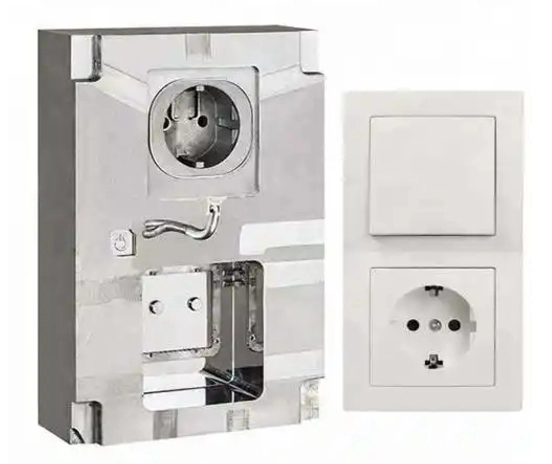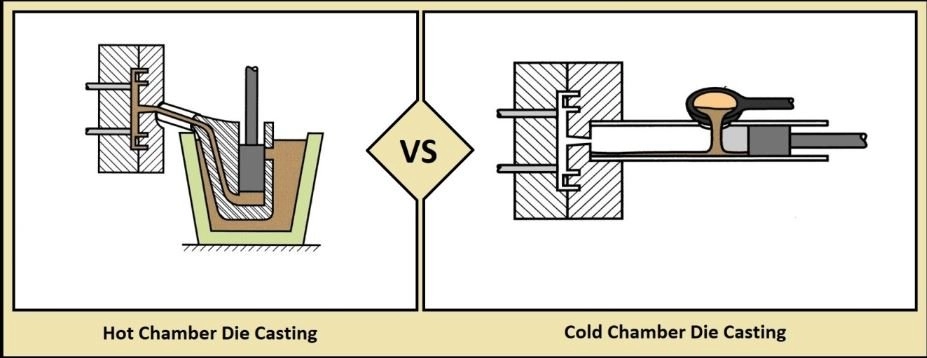Are you battling casting defects that compromise your CNC machining projects? Identifying and resolving the 17 types of casting defects can transform your production quality and efficiency. As a manufacturer, I know how critical flawless castings are to your success. Drawing from real-world industry expertise, this guide dives into the causes, solutions, and prevention strategies for these defects, empowering you to achieve superior results. Whether you’re in automotive, aerospace, or construction, mastering metal casting quality control is a game-changer. Let’s explore the 17 types of casting defects and how HYCNC ensures defect-free parts—read on to elevate your craft!
What Are Casting Defects and Why Do They Matter
Have you ever wondered why some metal parts don’t meet your quality expectations or fail sooner than they should? Casting defects are often the reason. Simply put, casting defects are irregularities or flaws that affect a metal casting’s surface, strength, or overall performance. These defects can range from tiny surface holes to internal cracks that aren’t visible at first glance.
Why do these defects matter so much? Because they directly impact the structural integrity of the part, leading to possible failures in critical applications. On top of that, defects raise production costs due to scrap and rework. Perhaps most importantly, they can damage customer trust when products don’t live up to expectations.
In CNC machining, where precision and durability are key, managing casting defects is essential. Without proper control, machining a defective casting means working on a flawed foundation, risking product failure downstream.
That’s where HYCNC stands out. Our rigorous quality control processes catch and minimize casting defects early — using precise mold design, controlled material handling, and state-of-the-art inspection methods. This ensures the parts we deliver not only look flawless but stand strong under pressure.
By addressing defects before machining, we help you get reliable, high-performance metal parts that meet both your specs and your deadlines.
The 17 Types of Casting Defects Causes and Solutions

1. Pinholes
Description: Tiny holes, about 2mm, on the casting surface caused by trapped gas.
Causes: High moisture in molds and dissolved gases like hydrogen in molten metal.
Solutions: Improve mold ventilation, use degassing techniques, and maintain controlled pouring temperatures.
2. Blowholes
Description: Larger cavities, often beneath the surface, from trapped gases.
Causes: Poor venting, excessive moisture, or fine sand grains in the mold.
Solutions: Use high permeability sand, ensure proper venting, and control moisture levels.
3. Open Holes
Description: Visible surface blowholes on the casting.
Causes: Inadequate mold design or gas trapped during pouring.
Solutions: Optimize mold design and improve gating systems for better gas escape.
4. Shrinkage Porosity
Description: Small voids or cavities from metal contracting as it solidifies.
Causes: Insufficient feed metal and improper cooling rates.
Solutions: Design effective gating and risering systems and use chill blocks to manage cooling.
5. Open Shrinkage Defects (Pipes and Caved Surfaces)
Description: Surface cavities or depressions from shrinkage.
Causes: Lack of risers and uneven cooling in the mold.
Solutions: Add risers and ensure directional solidification during casting.
6. Closed Shrinkage Defects
Description: Internal voids caused by isolated hot spots inside the casting.
Causes: Poor mold design and inadequate feeding of molten metal.
Solutions: Use predictive solidification modeling and adjust alloy composition as needed.
7. Cold Shut
Description: Cracks or seams where two streams of molten metal failed to fuse properly.
Causes: Low pouring temperatures and high pouring velocity.
Solutions: Control pouring temperature and optimize mold filling techniques.
8. Misrun
Description: Incomplete casting caused by molten metal not fully filling the mold.
Causes: Too low pouring temperature or poorly designed molds.
Solutions: Raise pouring temperature and improve mold design for smooth flow.
9. Sand Inclusion
Description: Sand particles trapped inside the casting surface.
Causes: Loose mold sand or pouring too quickly.
Solutions: Proper sand ramming and use mold wash or no-bake molding techniques.
10. Slag Inclusion
Description: Non-metallic materials like slag trapped in the casting.
Causes: Poor skimming of molten metal and bad gating design.
Solutions: Use filtration systems and improve pouring practices.
11. Hot Tears
Description: Cracks from tensile stress appearing as the casting cools.
Causes: Poor mold design and high shrinkage stress areas.
Solutions: Optimize mold design and apply stress-relieving heat treatments.
12. Hot Spots
Description: Hard areas formed due to rapid cooling or alloy segregation.
Causes: Uneven cooling rates during solidification.
Solutions: Control cooling rates and apply post-casting heat treatments.
13. Swells
Description: Bulges or enlarged areas on the casting surface.
Causes: Excessive mold moisture and inadequate venting.
Solutions: Control mold moisture and improve venting design.
14. Fins
Description: Thin metal projections found along mold parting lines.
Causes: Incorrect mold assembly or loose mold cores.
Solutions: Ensure precise mold alignment and use locking features to secure mold parts.
15. Rat Tails and Buckles
Description: Irregular lines or cracks on the casting surface.
Causes: Low sand strength and high pouring temperature.
Solutions: Use high strength sand and optimize pouring temperature.
16. Warpage
Description: Unwanted deformation during or after solidification.
Causes: Uneven cooling rates and large flat casting sections.
Solutions: Design for uniform cooling using ribs or corrugated shapes.
17. Mismatch
Description: Misaligned mold halves causing dimensional inaccuracies.
Causes: Improper mold alignment and external vibrations during casting.
Solutions: Use dowel pins or keys and carefully verify mold alignment before pouring.
For more on preventing common defects in metal parts, check out our metal casting quality control and die casting insights.
How to Detect Casting Defects
Detecting casting defects early is key to ensuring quality parts. The most common methods include:
- Visual inspection to spot surface flaws like cracks, pores, or misalignments.
- X-ray testing for revealing hidden internal defects such as porosity or inclusions.
- Ultrasonic testing which uses sound waves to detect subsurface cracks or voids.
- Infrared thermography to identify uneven cooling or hot spots by checking temperature differences.
- Hardness testing to assess material consistency and possible weak spots caused by defects.
Non-destructive testing (NDT) plays a crucial role in catching problems that aren’t visible to the naked eye, preventing costly failures down the line.
At HYCNC, we combine these advanced inspection techniques with precise CNC machining to ensure every part meets strict quality standards. Our thorough approach means fewer defects, better durability, and parts you can trust.
Preventing Casting Defects with HYCNC
At HYCNC, preventing casting defects starts with smart process optimization. We focus on refining every step—from mold design to material selection and controlled pouring—to ensure the best results. Proper mold design helps avoid common pitfalls like gas entrapment and shrinkage issues, while selecting quality materials reduces risks of impurities or inclusions.
We also use advanced computer simulations and predictive modeling to catch potential problems before production even begins. This lets us optimize the casting process to reduce defects and improve overall quality.
Our commitment to quality goes beyond design and simulation. We combine high-grade materials with precise CNC machining to meet tight tolerances and deliver durable parts. Rigorous quality control measures are in place throughout production to catch any defects early.
For example, we helped an automotive client significantly cut down casting defects by redesigning their gating system and improving mold ventilation. This not only lowered scrap rates but also enhanced part performance and reliability, proving our methods work in real-world applications.
Choosing HYCNC means partnering with experts who prioritize defect prevention and top-notch metal casting quality control.
For more on casting methods, check out our detailed guide on what is die casting.
Why Choose HYCNC for Defect Free Casting and CNC Machining
At HYCNC, we specialize in casting and CNC machining services that prioritize quality from start to finish. Our team has deep expertise in identifying and preventing common casting defects, ensuring your parts meet both performance and visual standards.
We back our work with strict quality assurance processes, fast turnaround times, and cost-effective solutions that help you stay competitive without sacrificing precision. Whether you need prototypes or production runs, HYCNC delivers parts you can trust.
Ready to improve your casting process and reduce defects? Contact HYCNC today for a free DFM (Design for Manufacturability) analysis or a custom quote. Let’s optimize your parts for the best results.




